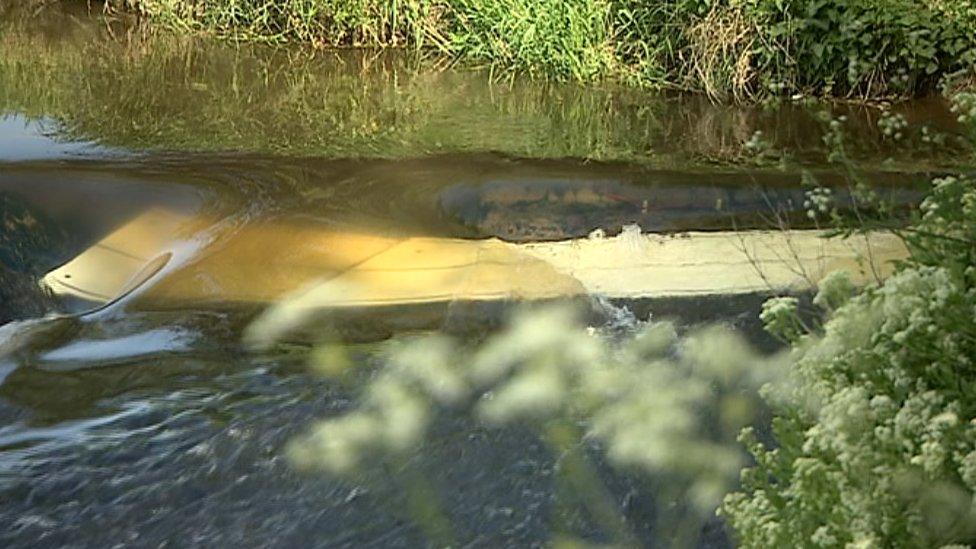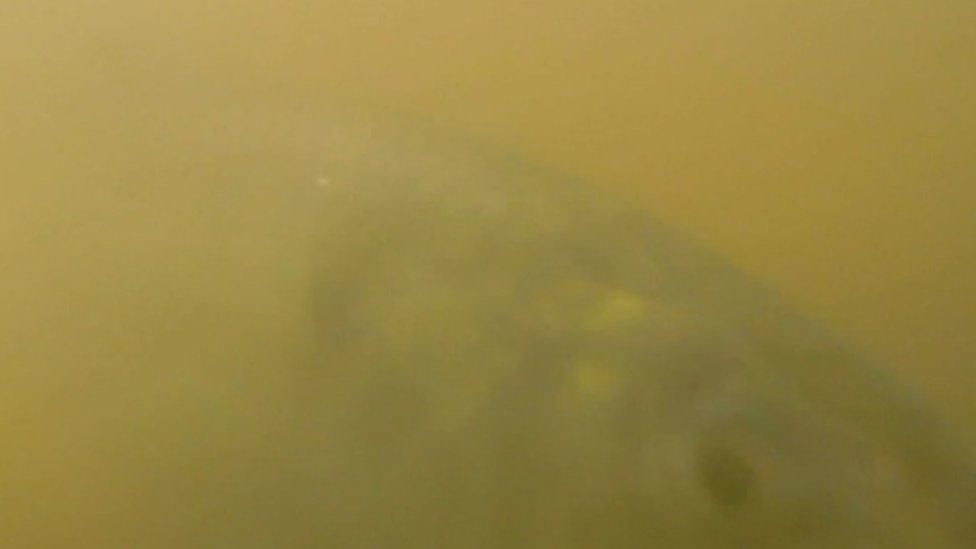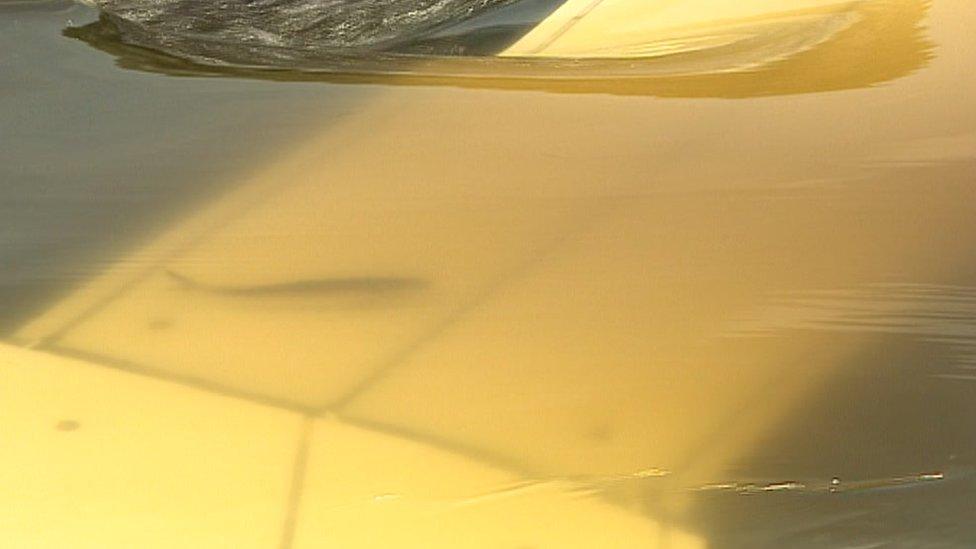Bringing back the shad, forgotten herring of the Severn
- Published
The forgotten fish of the River Severn
I've spent a lot of time in this job staring at the River Severn.
It's very beautiful, sometimes frightening but always a mystery.
What goes on under the dark surface of the water? What lives in the river hidden from view?
What I do know from years of reporting is that, for some of our fish, life in the Severn is much harder than it used to be.
Migratory fish especially have had a difficult time dealing with many of the changes the industrial revolution brought to the Severn and its tributaries.
Unlock the Severn
All that is about to change though and the posterfish for a massive £20m project to unlock the Severn is the shad - subspecies of herring that's currently heading upstream to spawn.
But in a scheme to help migratory fish why not focus on famous examples like the salmon or the eel? Most of us haven't even heard of the shad.
Well a couple of hundred years ago there was a huge fishing industry based around the spawning shad and the River Severn.

The white board is part of an automated shad-counting sensor
For poor people in Gloucestershire, Worcestershire and Shropshire the shad was a vital source of protein.
Probably your first really decent and plentiful meat-based meal after a long hard winter.
And it wasn't just a fish for poor people it was a favourite of kings and queens, external.
Queen Elizabeth ordered the destruction of weirs to prevent the taking of "any lamprey, shad or Twaite" and after the civil war Charles II ordered "200 shad from Gloucester to be sent to him in Westminster."
Shad counting
I spent a lovely afternoon on the Severn at the weir near Tewkesbury counting shad.
Normally this is almost impossible but I was able to see the shad as they struggled up over the weir at a tiny "notch" where they can just about scramble over.
The shad were dark shapes against a white sheet on the bottom of the river.

Eye eye! In a murky Severn we just managed to catch a shad on camera up close
This sheet is actually a sophisticated monitoring device that detects the shad thanks to the variations they cause in a harmless electrical current.
Combining the count from volunteers like me allows the machine can be calibrated and left to run for long periods of time.
But the numbers we were seeing were a long way down on the peak shad populations.
Industrial revolution
It was the industrial revolution that did for the shad and many fish in the Severn.
There was a demand to make the River Severn navigable for boats and that meant locks and weirs.
And weirs make life for migratory fish getting back up the river almost impossible.
It's one reason why salmon, eel and shad numbers have been declining from their peak hundreds of years ago.
Shad in particular had a tough time because they're just not as athletic as salmon.
Sadly things elsewhere in Europe are so grim for the shad that even the depleted numbers on the Severn make the river a relative population stronghold for the fish.
The hope is the new scheme, external will change all that.

A single shad swims over the shad-counter and the Tewkesbury weir. Notice the forked tail typical of a herring.
The aim is to rebuild six weirs, four on the Severn and two on the Teme, to make them more fish friendly.
Helping even a relatively weak swimmer like the shad to go up and round the weir.
And of course if the shad can make it then it will be no problem for stronger swimmers like salmon or even for elvers.
This isn't just about the fish. Such a big project will bring construction jobs and hopefully in the long term boost tourism to the Severn and its tributaries.
Cash for all this comes from European Union LIFE Nature Programme: LIFE Shad Severn, external and the Heritage Lottery Fund.
There's also a strong educational aim for the Unlocking the Severn project.
To teach those who live near the Severn about the vital part the shad played in the history of this beautiful part of the world.